The Deeper Meaning Behind Nimona ’s Shape-Shifting Story
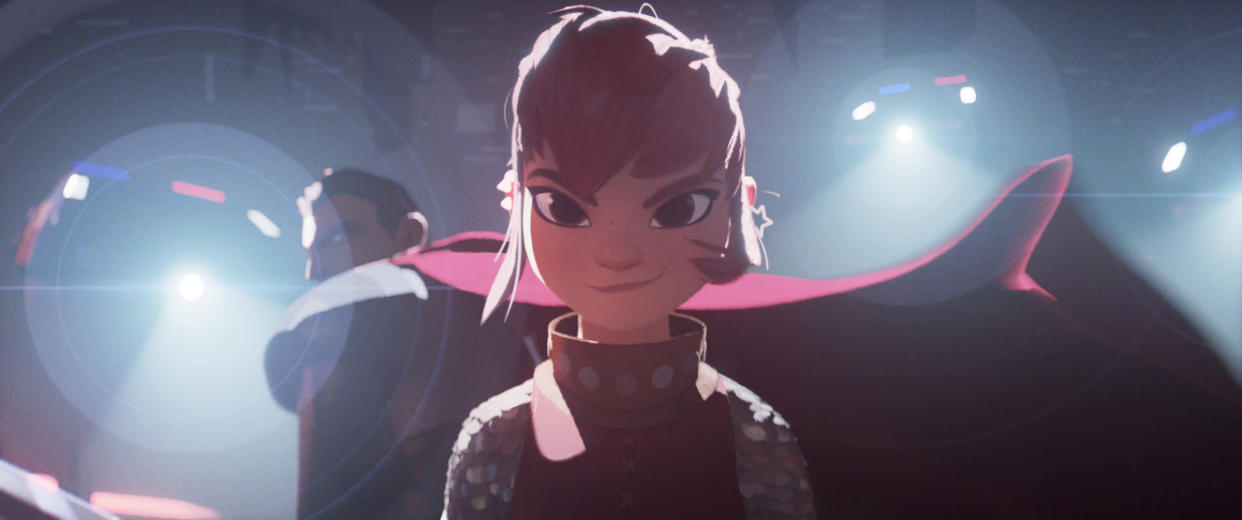
- Oops!Something went wrong.Please try again later.
Nimona (Chloë Grace Moretz) and Ballister Blackheart (Riz Ahmed) in 'Nimona.' Credit - Courtesy of Netflix
Partway through the new animated science fantasy film Nimona, the titular character, voiced by Chloë Grace Moretz, tries to explain her shape-shifting ability to her partner in crime, Ballister Blackheart (Riz Ahmed), a knight with a tarnished reputation.
“Honestly?” she says, “I feel worse when I don’t do it. Like my insides are itchy. You know that second right before you sneeze? That’s close to it. Then I shape-shift and I’m free.”
“What if you held it in?” Ballister asks. “If you didn’t shape-shift?”
“I’d die,” Nimona responds.
“That’s horrible!” Ballister exclaims.
“Don’t be so gullible,” Nimona says. “I wouldn’t die die. I just sure wouldn’t be living.”
Here, shape-shifting can be seen as an allegory for trans identity—and it has, by fans of the web comic-turned-graphic novel by the same name upon which the movie is based. (The web comic was originally dropped in episodic weekly updates over two years to a cult following on Tumblr.) To many of them, that “itchy insides” feeling is gender dysphoria. It feels fitting: Nimona author ND Stevenson, who also served as a co-producer on the film, is non-binary and transmasculine, and he came out after writing the comic.
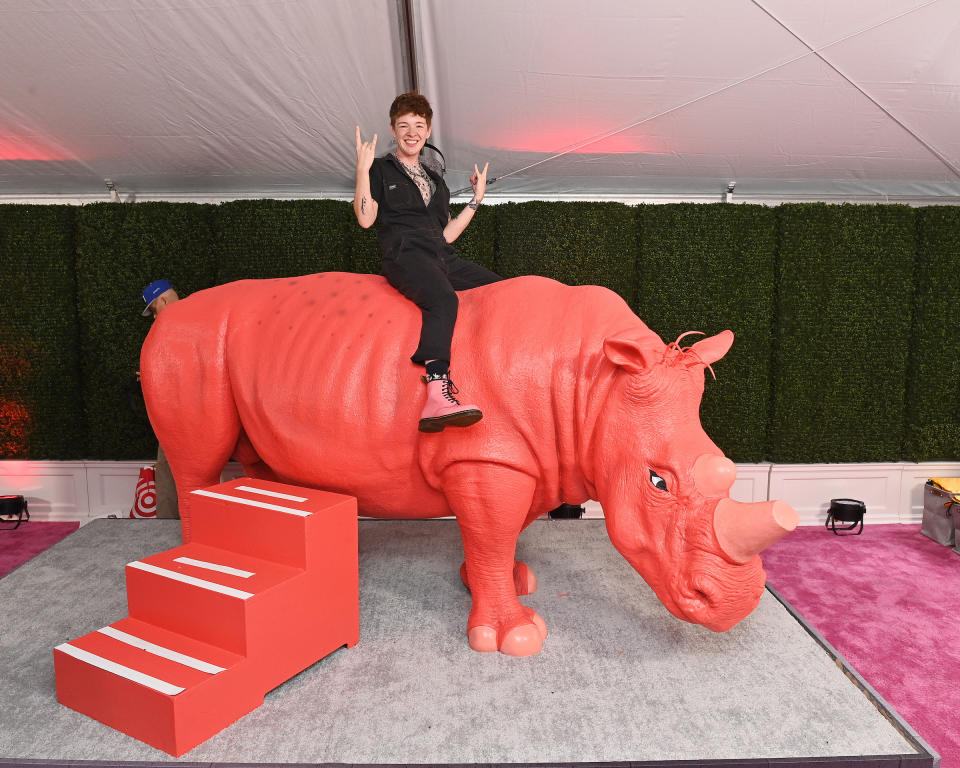
“There are times in my life where I feel like everybody knew what my deal was before I did, and this is one of them,” Stevenson tells TIME from Burbank, Calif. “But it would be years before I started to see that in myself. I guess I planted the seeds without realizing.”
Nimona, out on Friday on Netflix, follows the shape shifter’s journey alongside Ballister as they evade the Institute, a training ground for knights from which Ballister fled after being framed for a regicide he didn’t commit. Nimona shows up at his doorstep with the simple wish to be his villainous sidekick and wreak general havoc. (To further complicate matters, Ballister’s nemesis, golden boy knight Ambrosius Goldenloin, voiced by Eugene Lee Yang, is also his ex-boyfriend.)
The film’s aesthetic fuses the medieval and the futuristic, mirroring the comic’s mix of magic and science. Its animation style, a blend of 2-D and 3-D, makes computer rendering look hand-drawn, not unlike this summer’s Spider-Man: Across the Spider-Verse. Like Spider-Man, too, its PG rating belies its jokes and themes for all ages.
Stevenson has been obsessed with shape shifters since he was a kid, but never really thought much of it. Nimona can turn into anything—to rescue Ballister or just for fun—including a rhinoceros, a whale, a shark, a dragon, and multiple male human characters, the last of which she does regularly, embodying them fully.
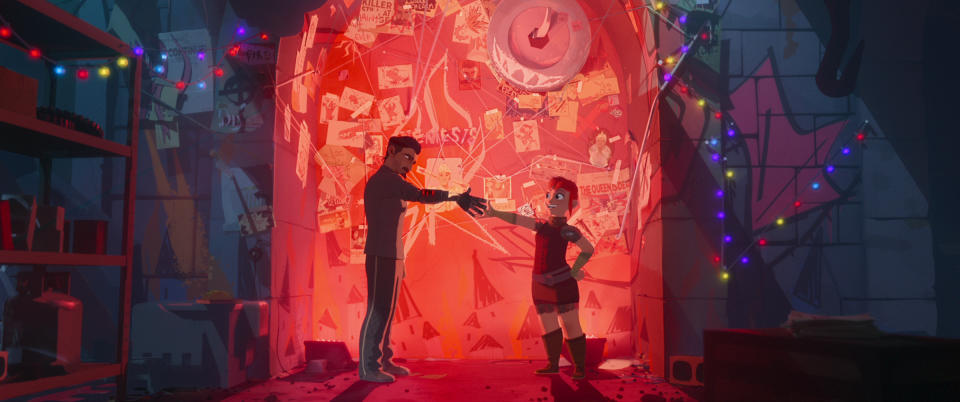
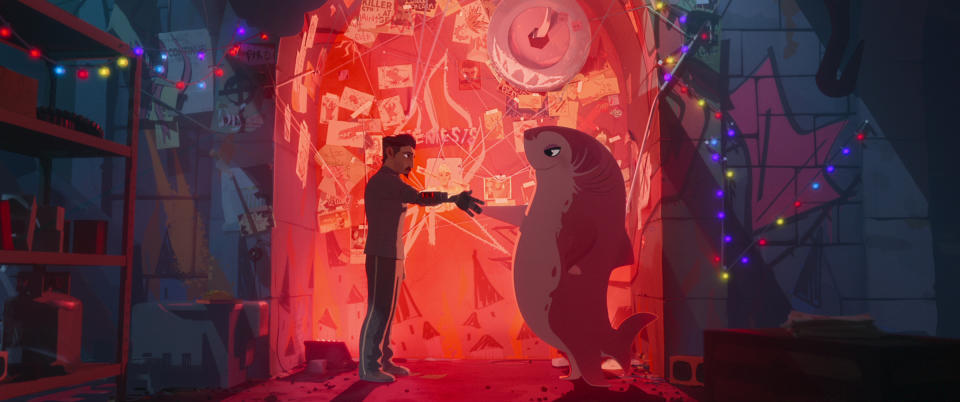
That was an aspect of the story that the filmmakers—including directors Nick Bruno and Troy Quane—drew to the forefront in a way that bowled Stevenson over. Every time he watches the movie, he sees something new, something he hadn’t realized he was doing when he wrote the book.
The “itchy insides” scene is one of those things. Nimona tries to commit herself to one life in one body with one set of relationships, but she physically can’t. It starts out as an itch, but the discomfort persists and it doesn’t get better.
“You don’t realize how that discomfort has turned to outright pain until you start to see it being relieved,” Stevenson says. “Which for me is what transition has been: These little steps of finding myself and what I am in the world. But still I am not just one thing, just like her. No one is.”
Nimona can’t be just one thing. If she stopped shapeshifting, she wouldn’t be herself. She exists in the in-between as pure energy moving from one form to the next. “What are you?” Ballister asks her the first time he sees her shape-shift. “I’m Nimona!” she replies. “So, you’re a girl and a rhino?” he asks. “I’m a lot of things,” she says, before turning into an armadillo, a bear, a bird, an otter, and a gorilla in rapid-fire succession.
The protagonist—billed as “a little anti, a little hero”—contains multitudes: She’s spiky, spunky, punk rock, metal, and anti-establishment. She explodes across the page and screen, but as readers and viewers slowly come to realize, she’s also hiding a lot of pain and darkness. “Once everyone sees you as a villain, that’s what you are,” she confides to Ballister. “They only see you one way, no matter how hard you try.”
That’s why Stevenson wanted to tell this story: When he started writing the web comic in his junior year at the Maryland Institute College of Art, he was feeling a lot of that same hurt and misunderstanding, struggling with mental health and looking for an outlet.
In the graphic novel—a 2015 National Book Award Finalist for Young People’s Literature—when Nimona is pressed to her breaking point, she splinters into two beings: a child that embodies all of the pain and betrayal she’s experienced and a creature of shadow and flame that personifies a blind rage toward the way she’s been treated.
Stevenson loves how the filmmakers adapted this climax in the heartrending final act. “You see her hopelessness,” he says, “but also her anger. She’s not sanded down. There’s no fear there. And you see that character being embraced for all of the scariness, the ugliness, the messiness, the anger.”
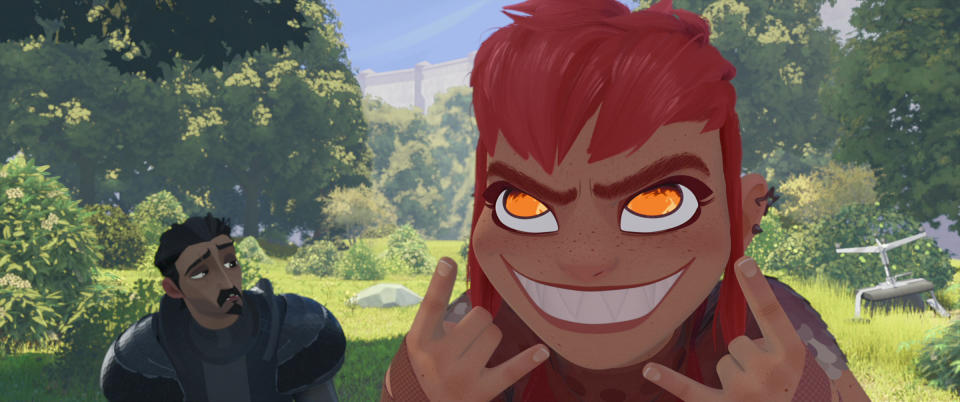
“And that is really important to me: No one is lovable all the time,” he continues. “Everybody needs that understanding. And she expresses that in a way that the rest of us can’t, not being able to turn into fire-breathing dragons.”
Toward the end of our conversation, Stevenson has a realization. He’s one of five siblings, in between two brothers and two sisters. Growing up, he felt like the odd one out—should he go with the boys or the girls?
Now, on the Nimona press tour, he’s doing Q&As and panels with Bruno and Quane, the two directors, who are cis men, and Karen Ryan and Julie Zackary, two cis women producers. This time, though, the Goldilocks fit feels just right. He can chill with the guys or chat with the girls, and shifting in between clicks for him.
This press tour feels right in a way that it never has before, in contrast to past projects—like She-Ra and the Princesses of Power and Lumberjanes—that Stevenson has worked on. Then, talking about girl power and badass women never felt right. But talking about Nimona does.
Nimona is “so much bigger and so much more unknowable than even the version of the character that we first come to know and love,” Stevenson says. If she existed in our reality, “she would be walking among us looking for truth and looking for love. And she could be anyone. So maybe that means you have to just give that love to everybody you meet, because maybe it’s her.”

